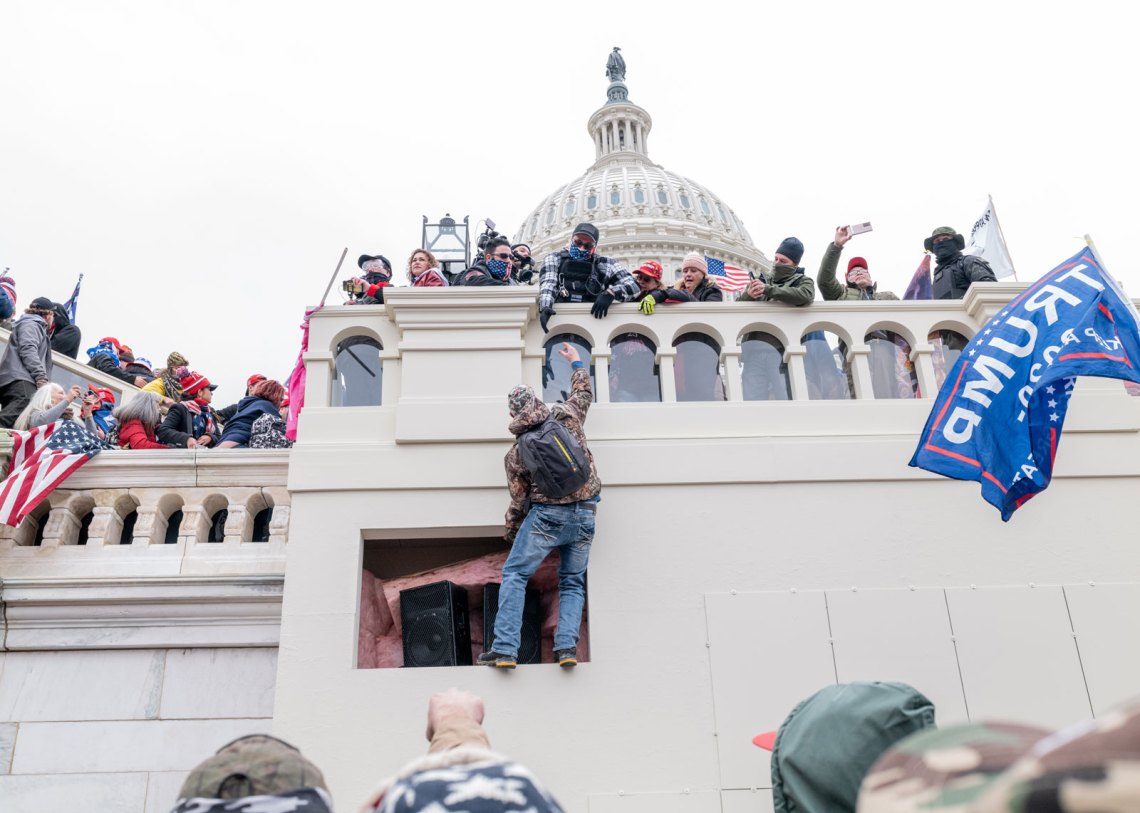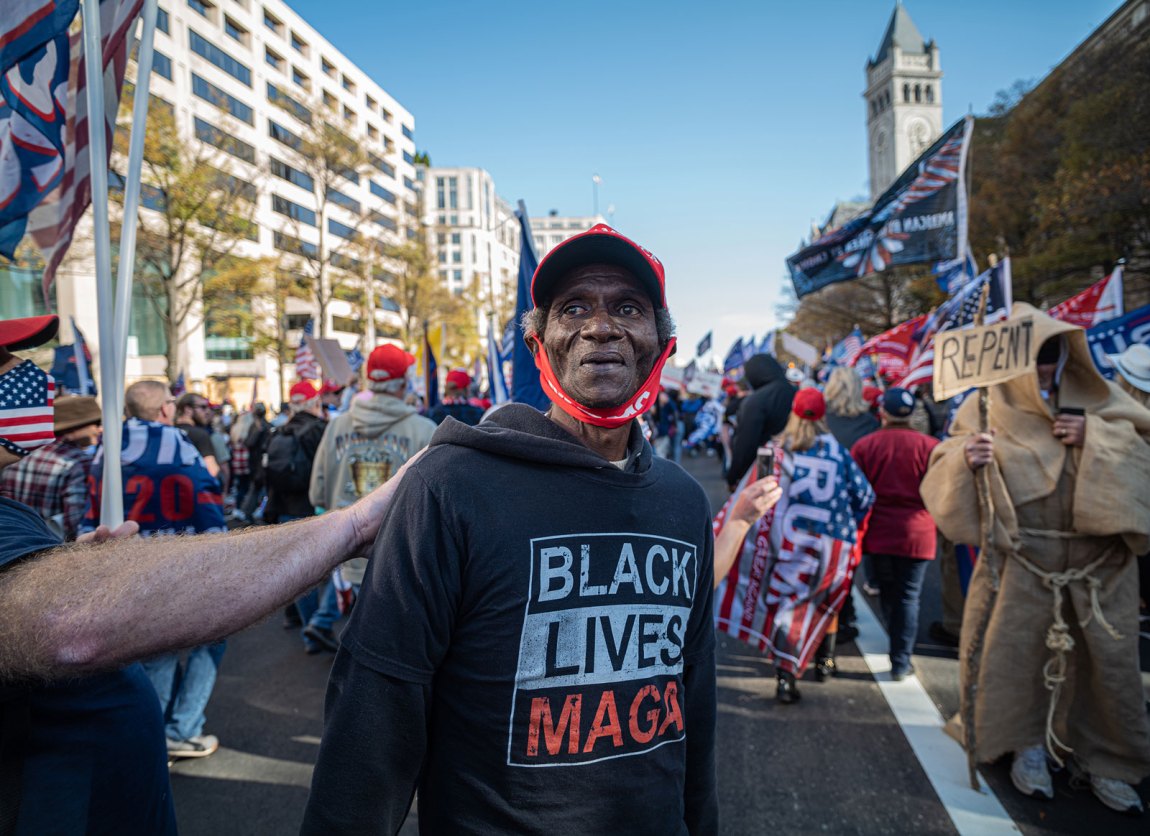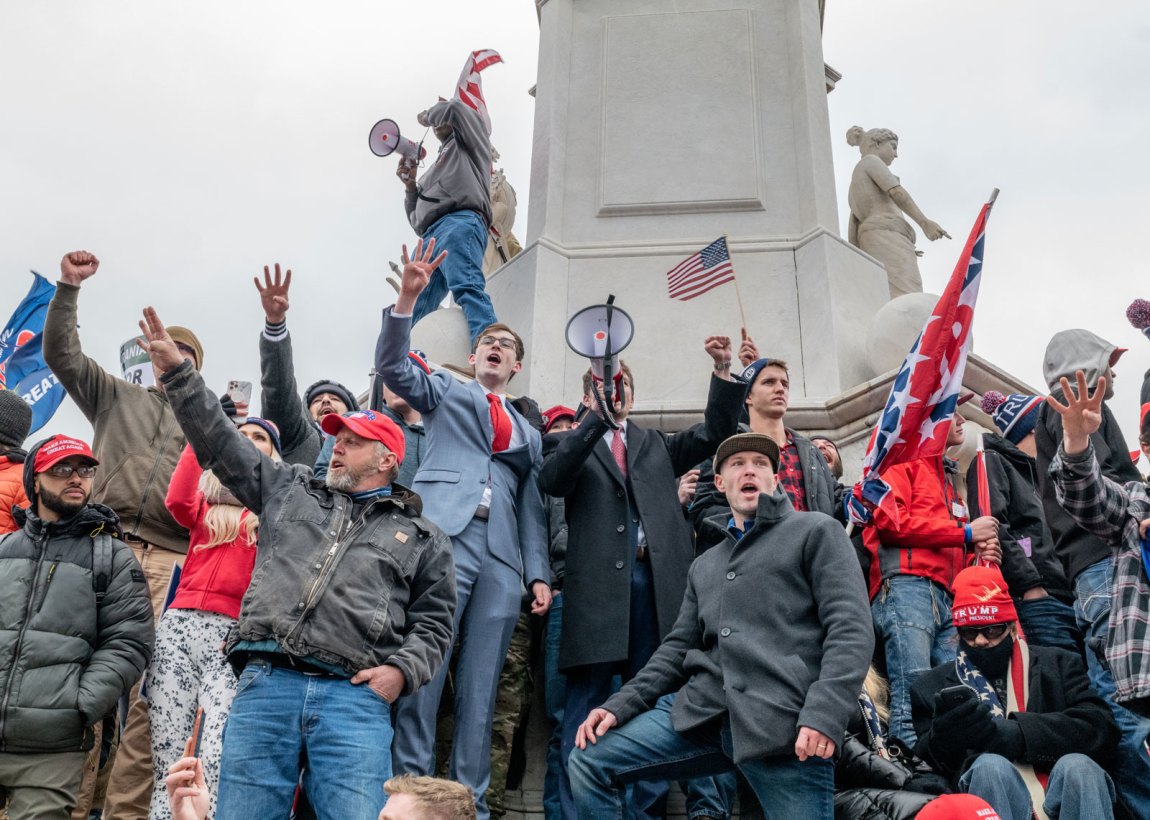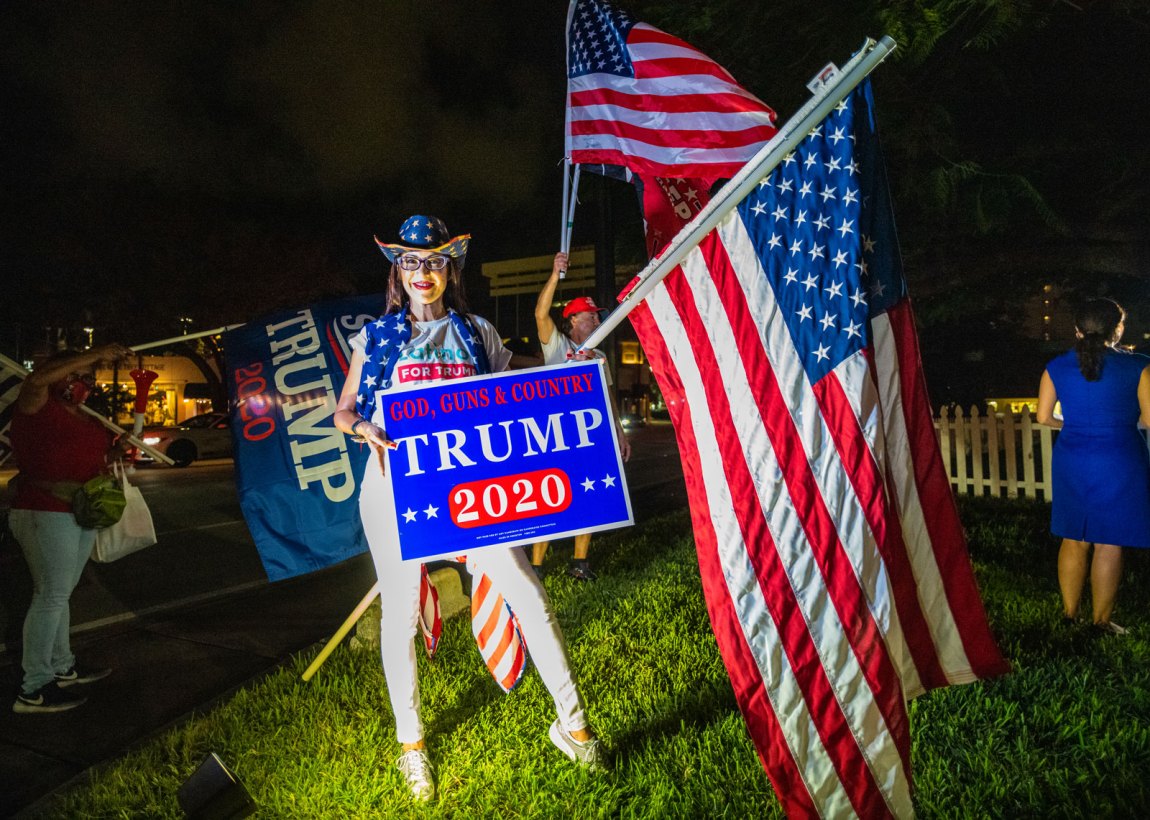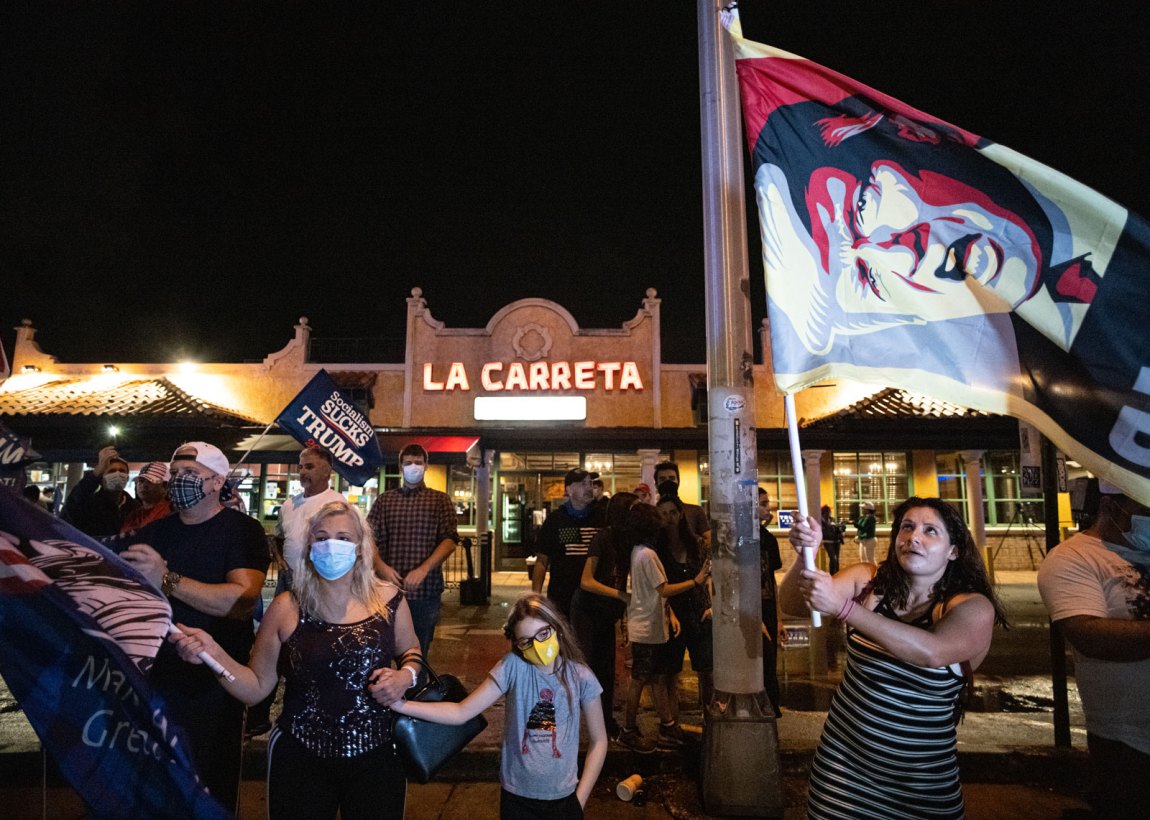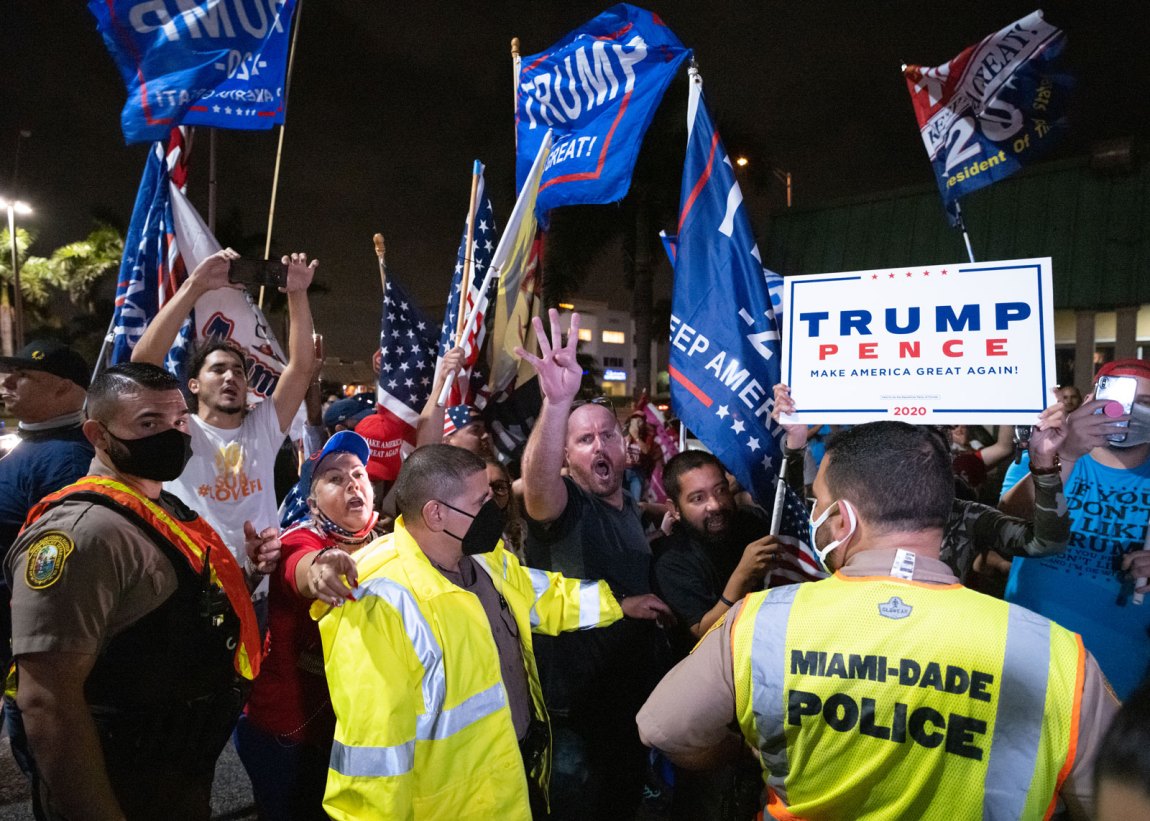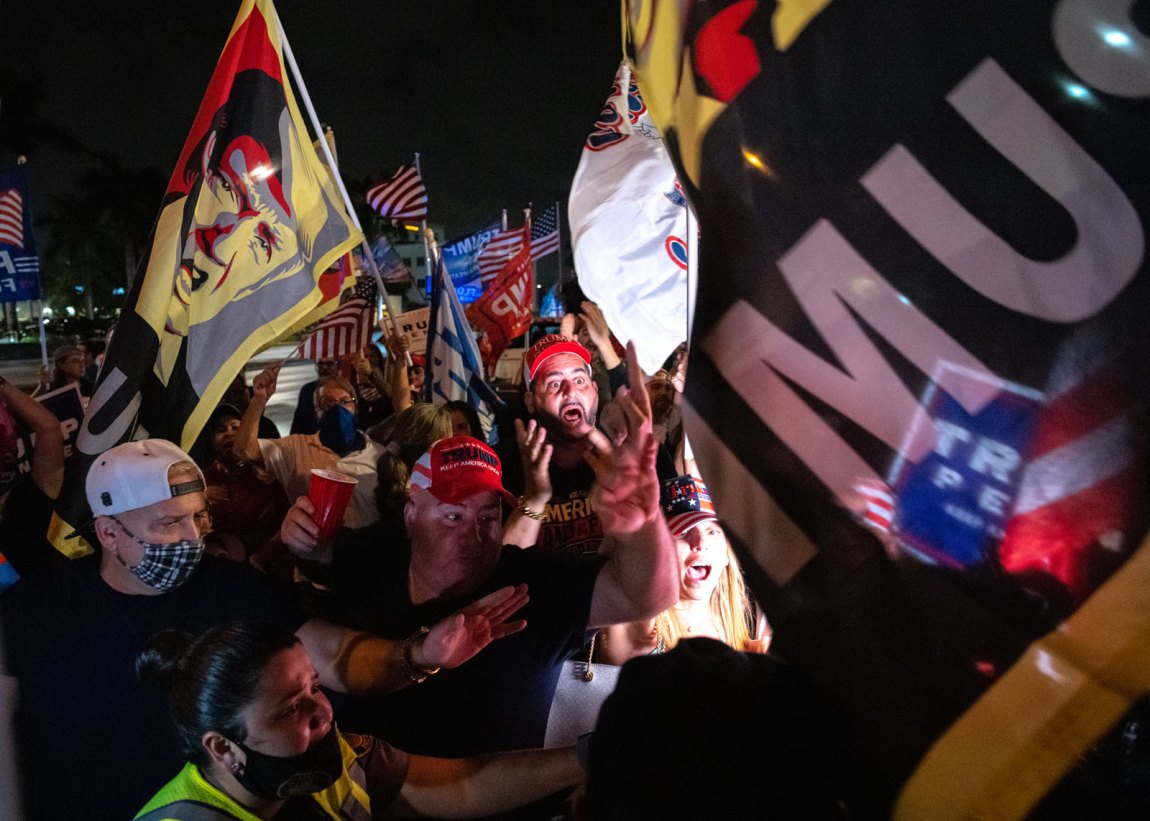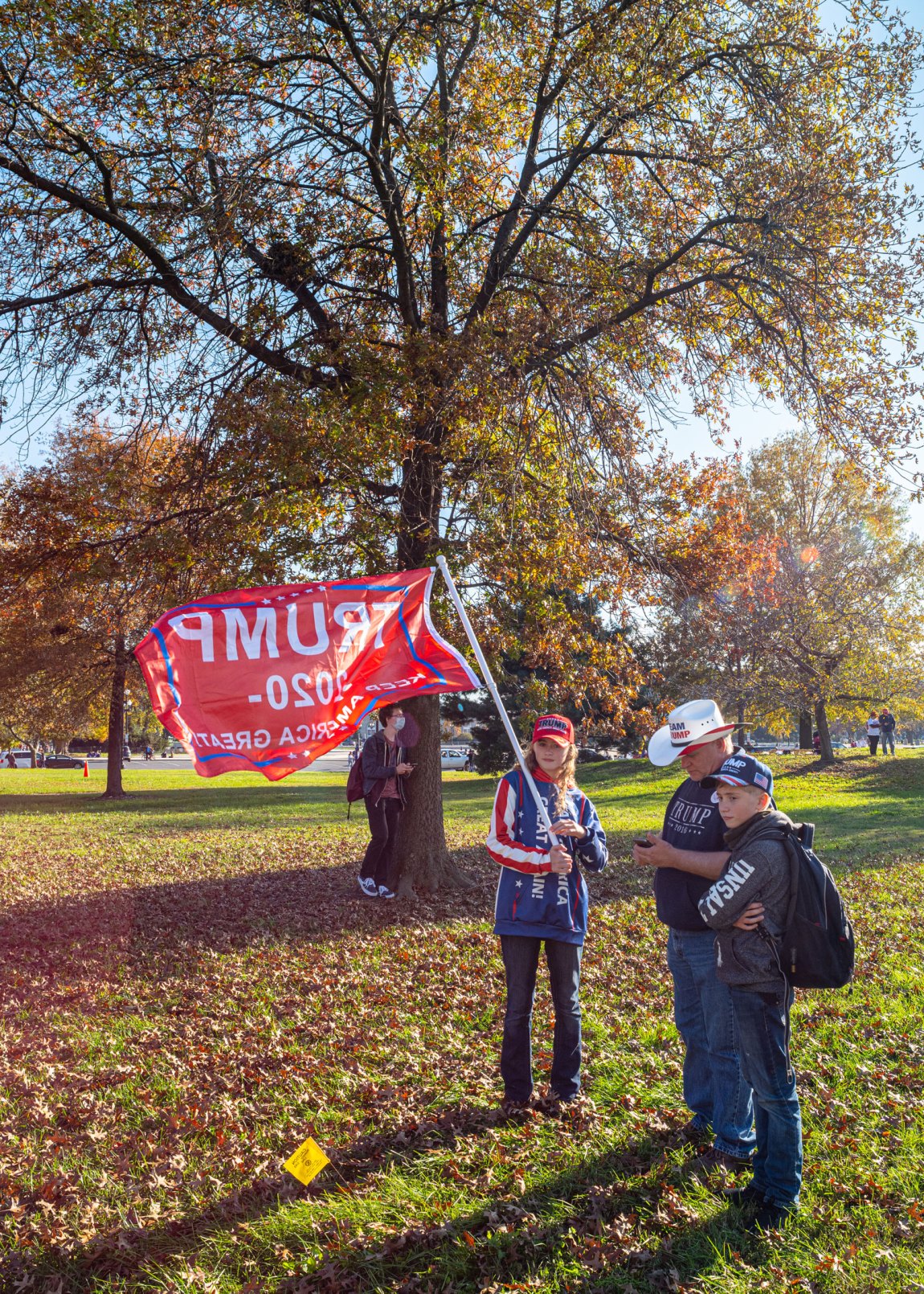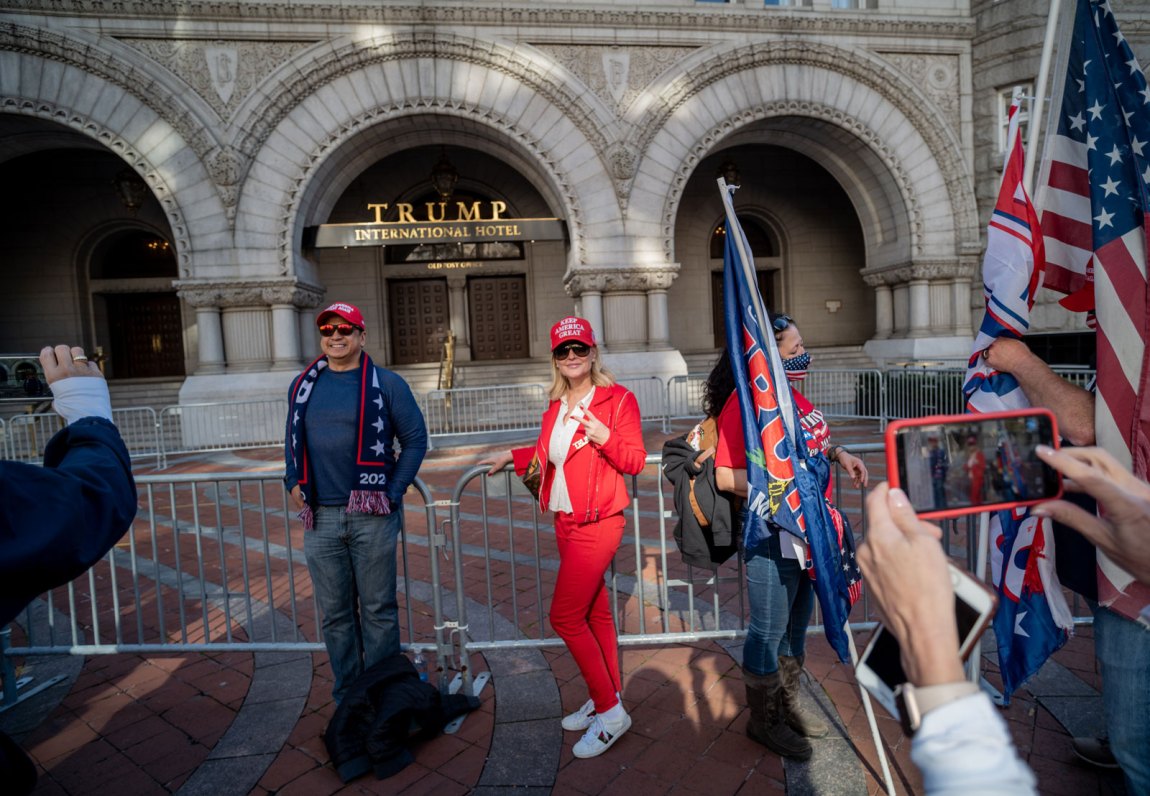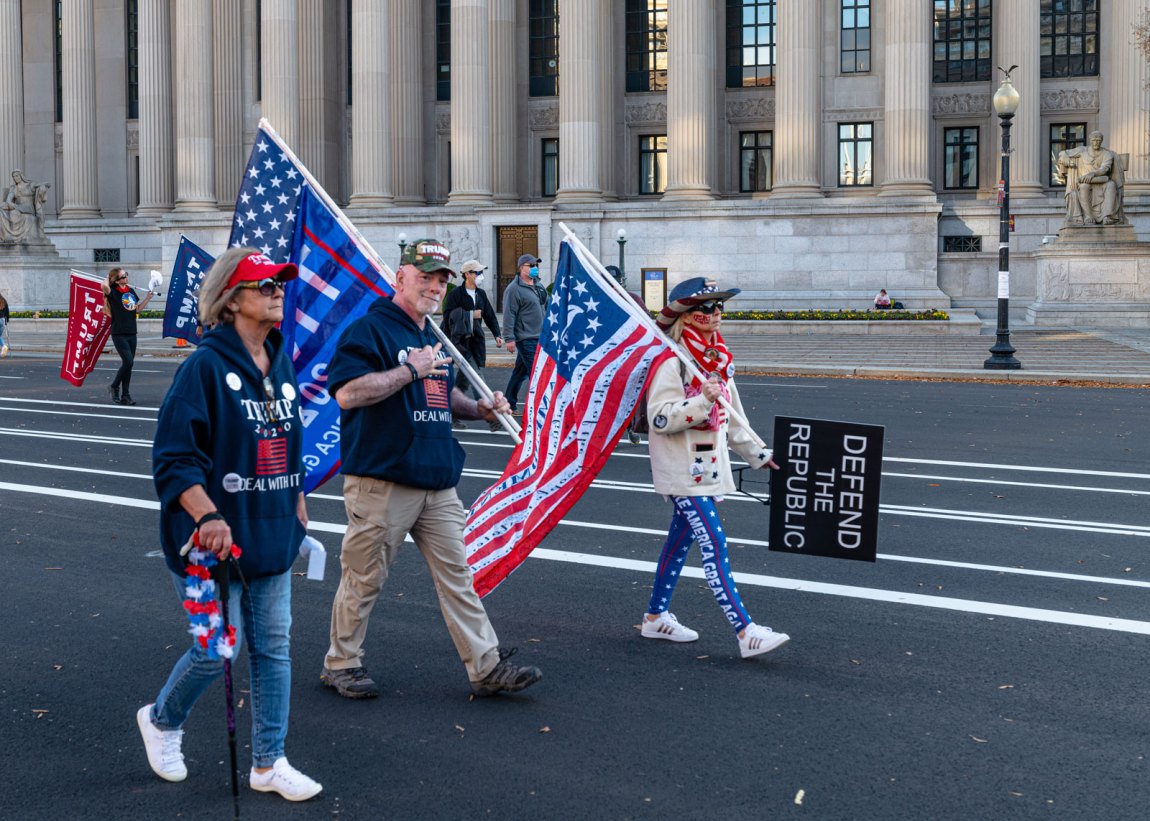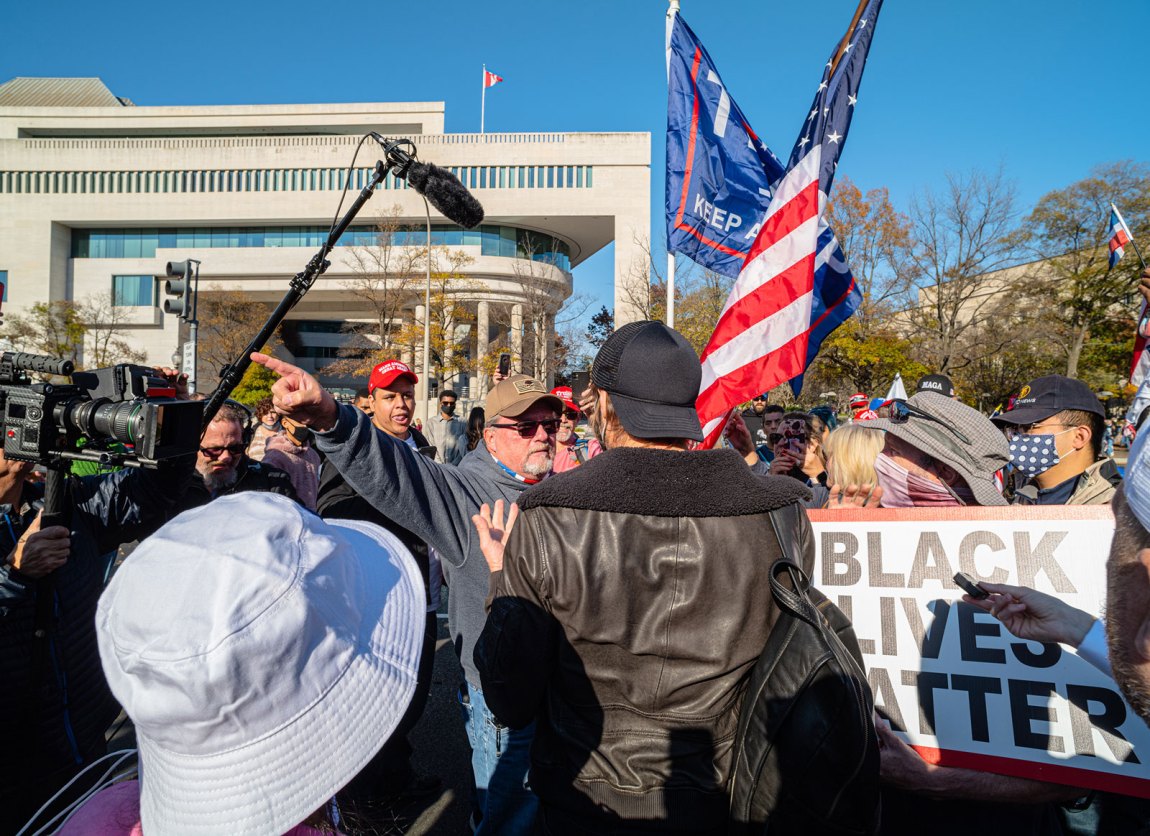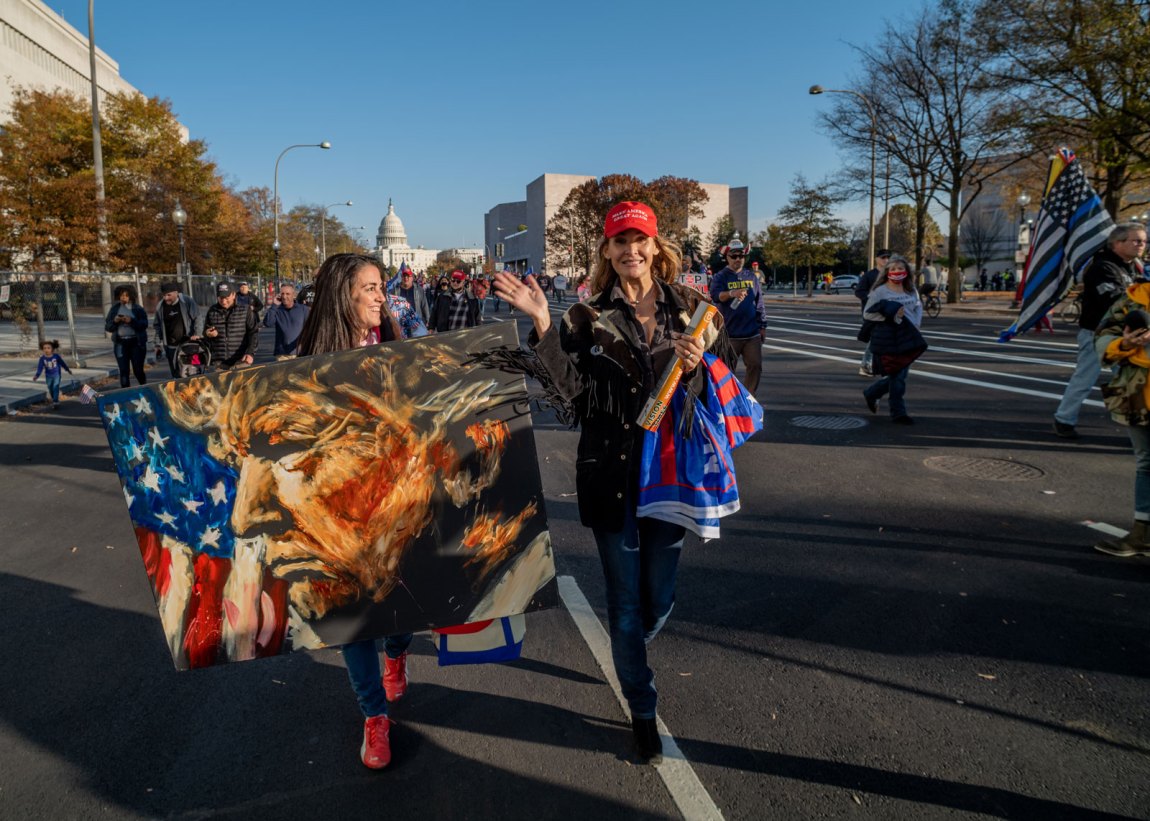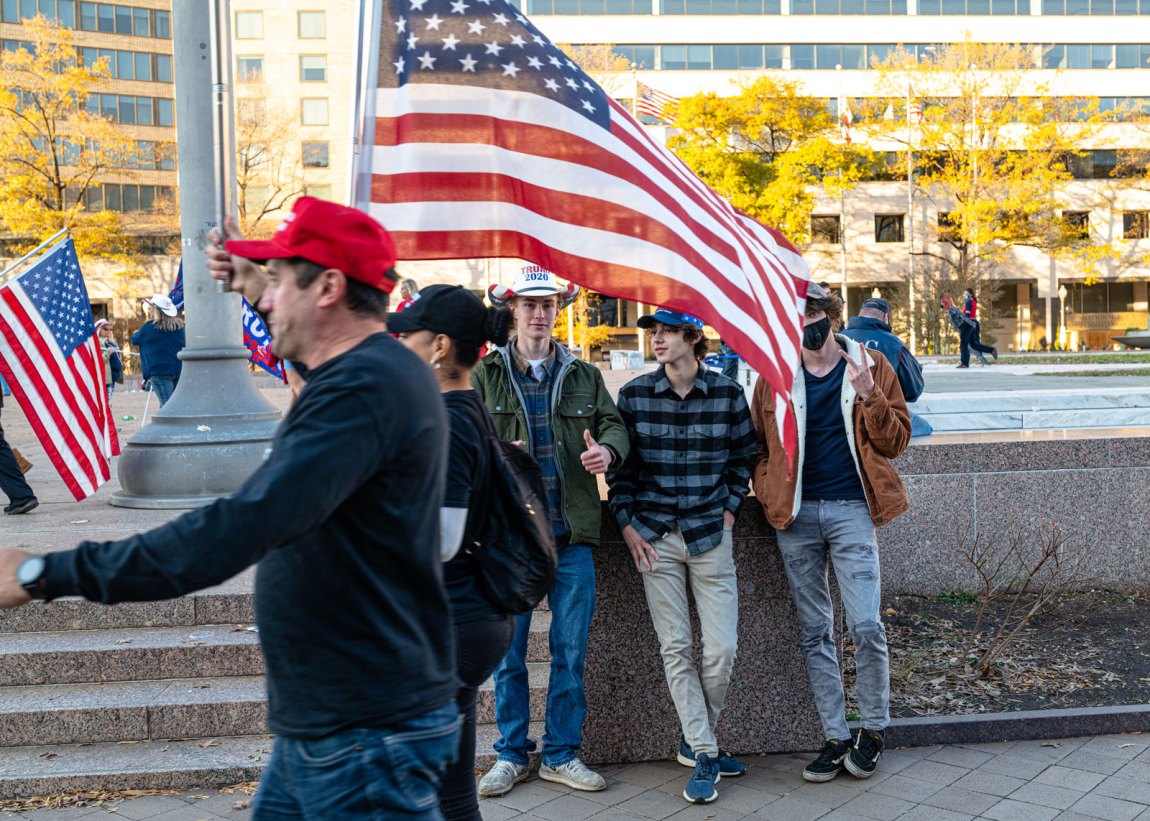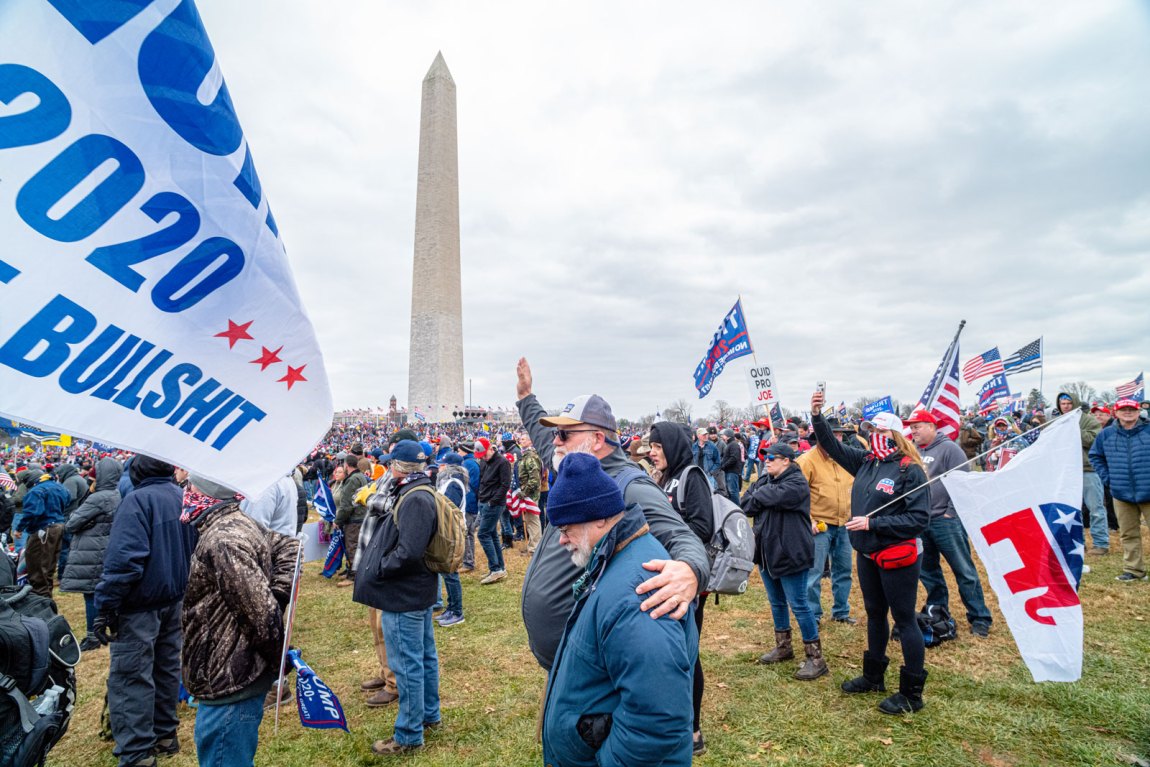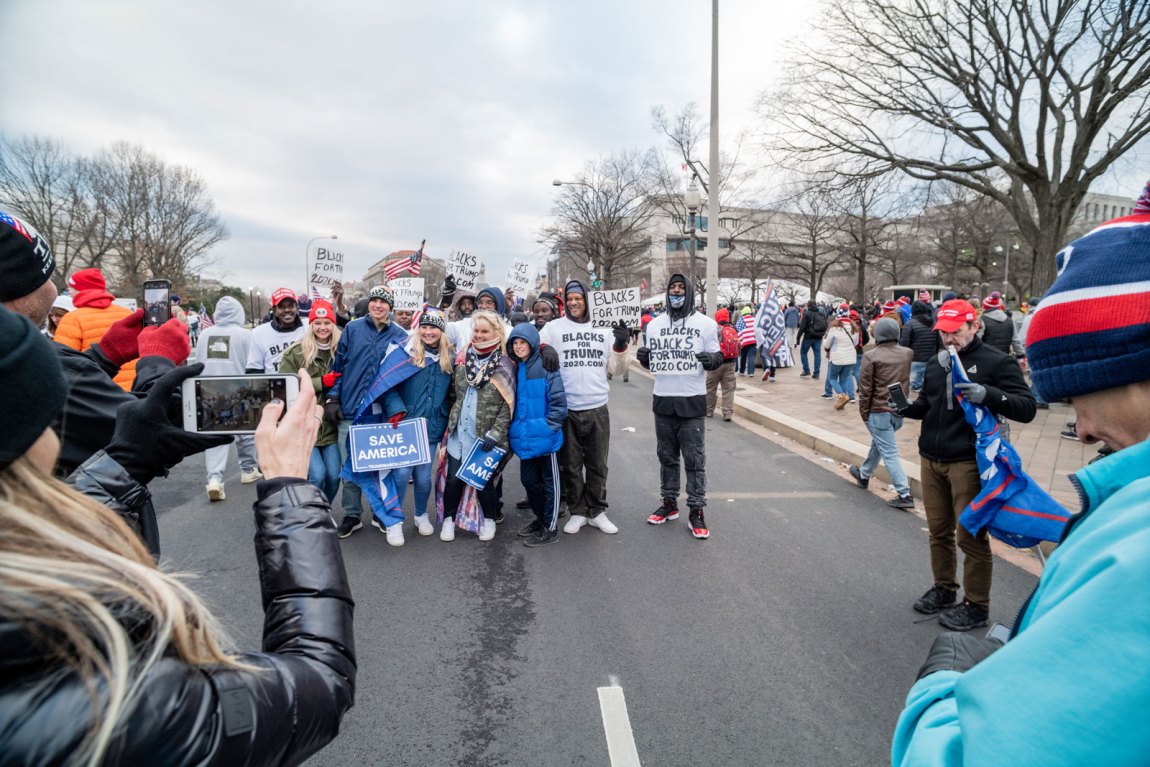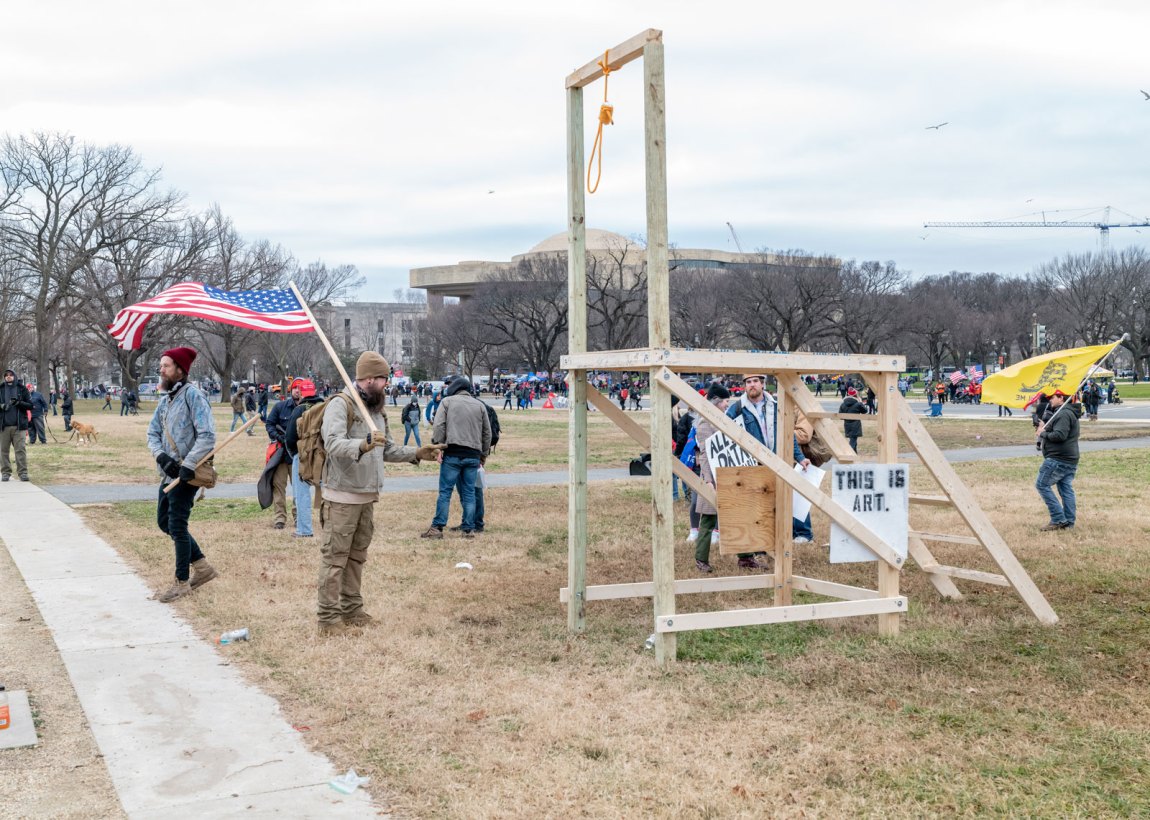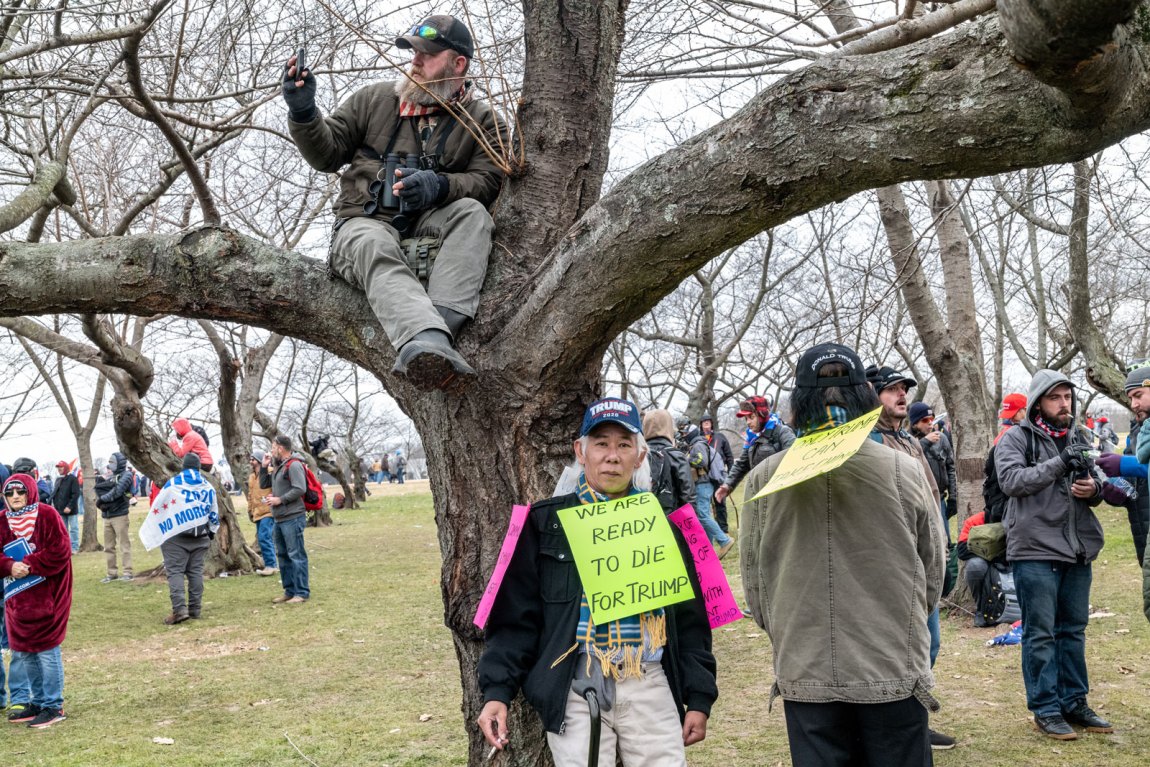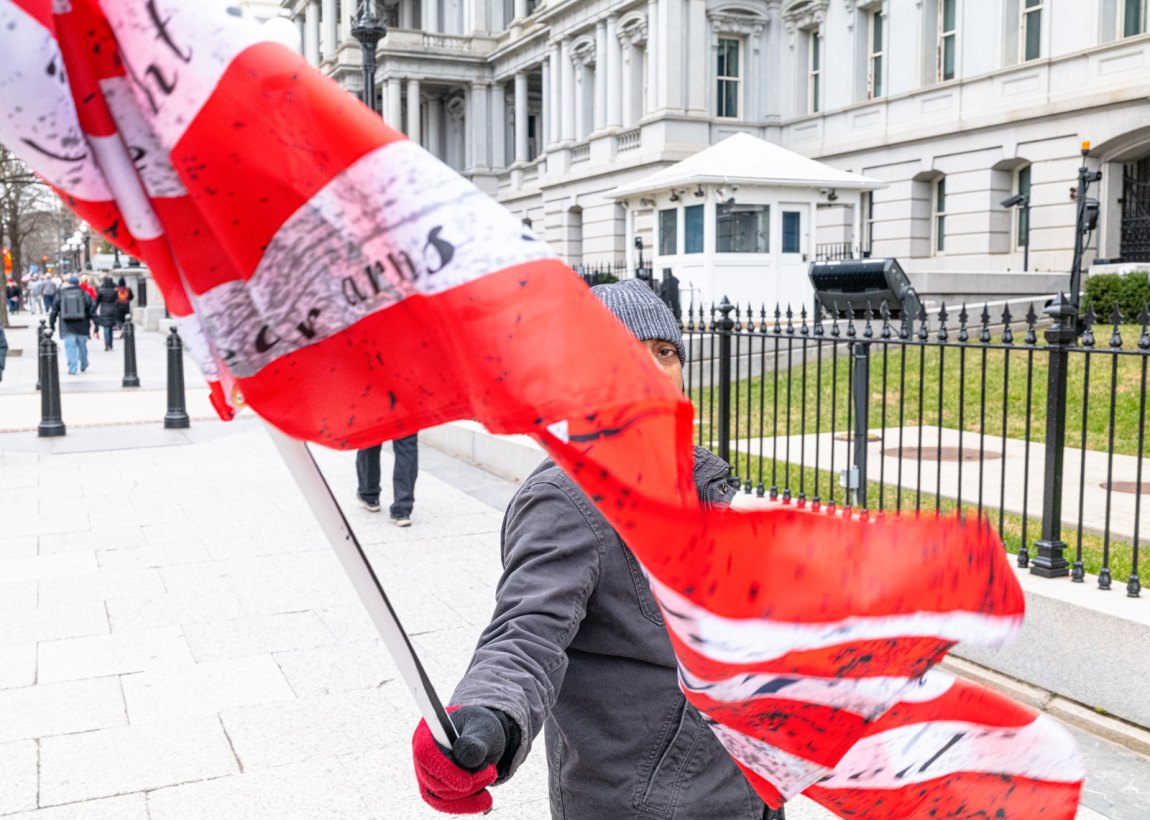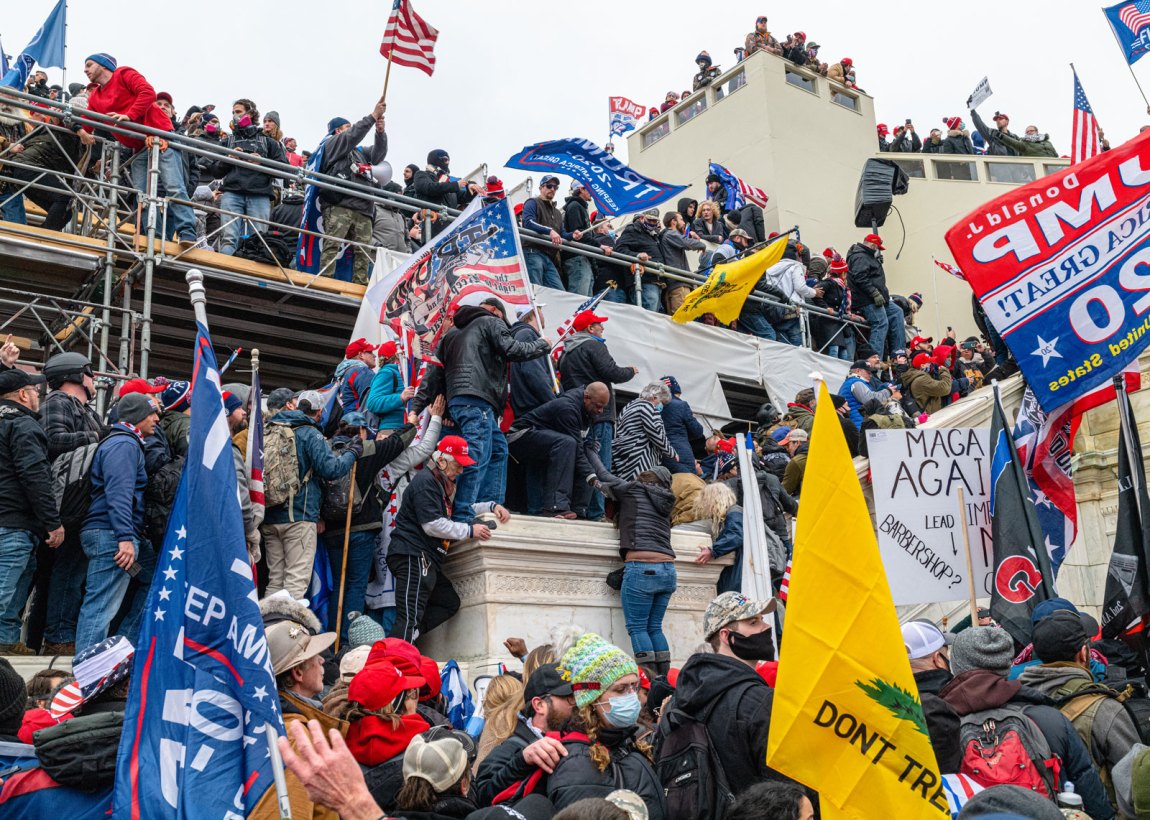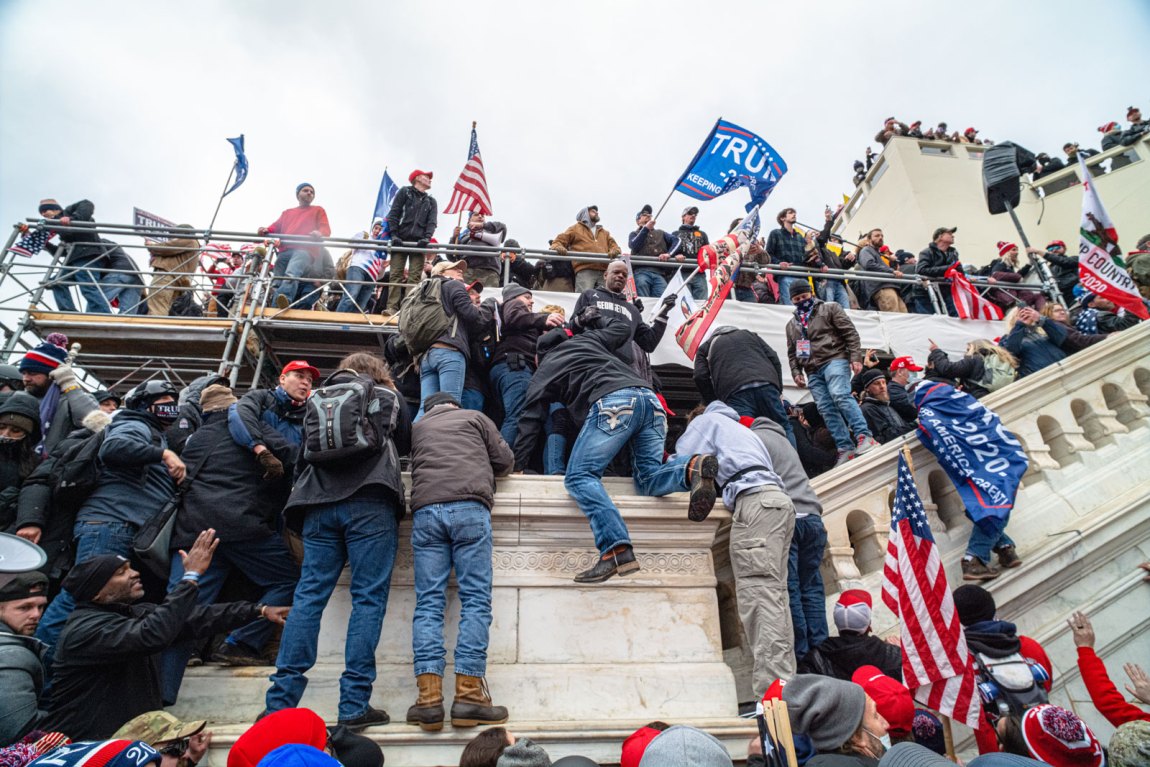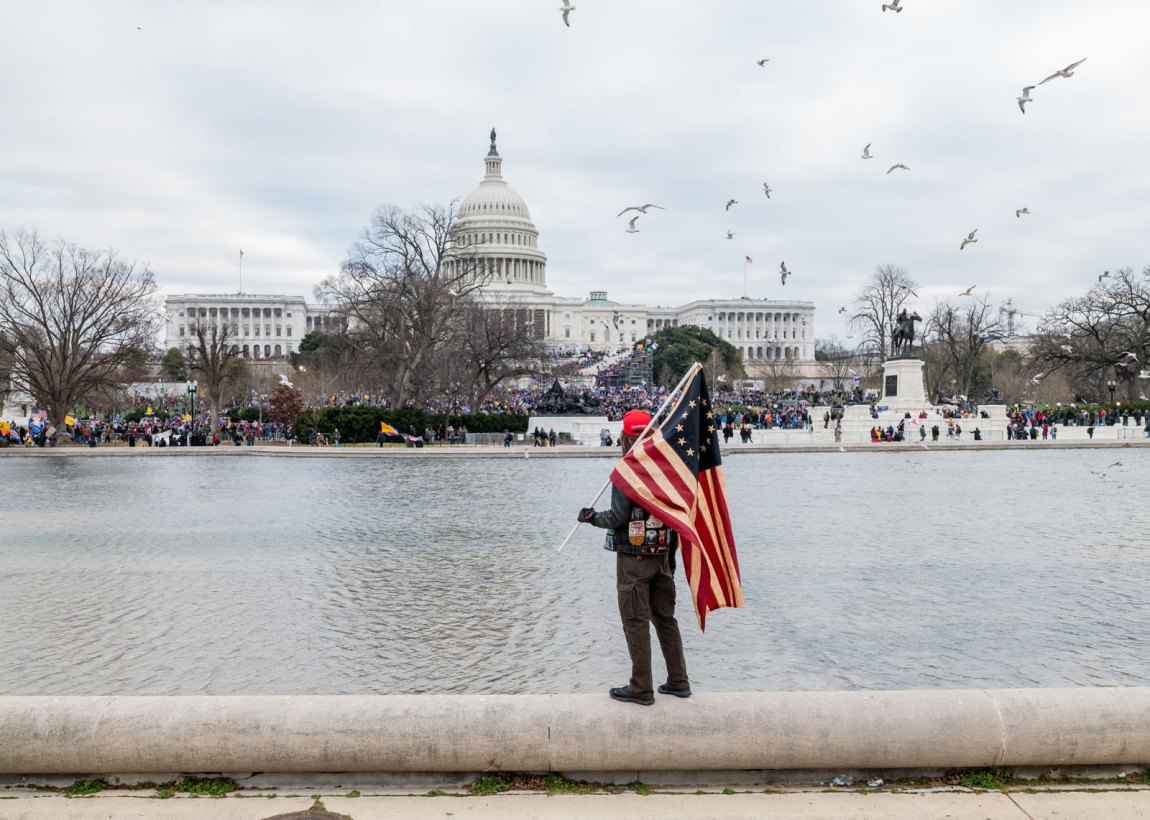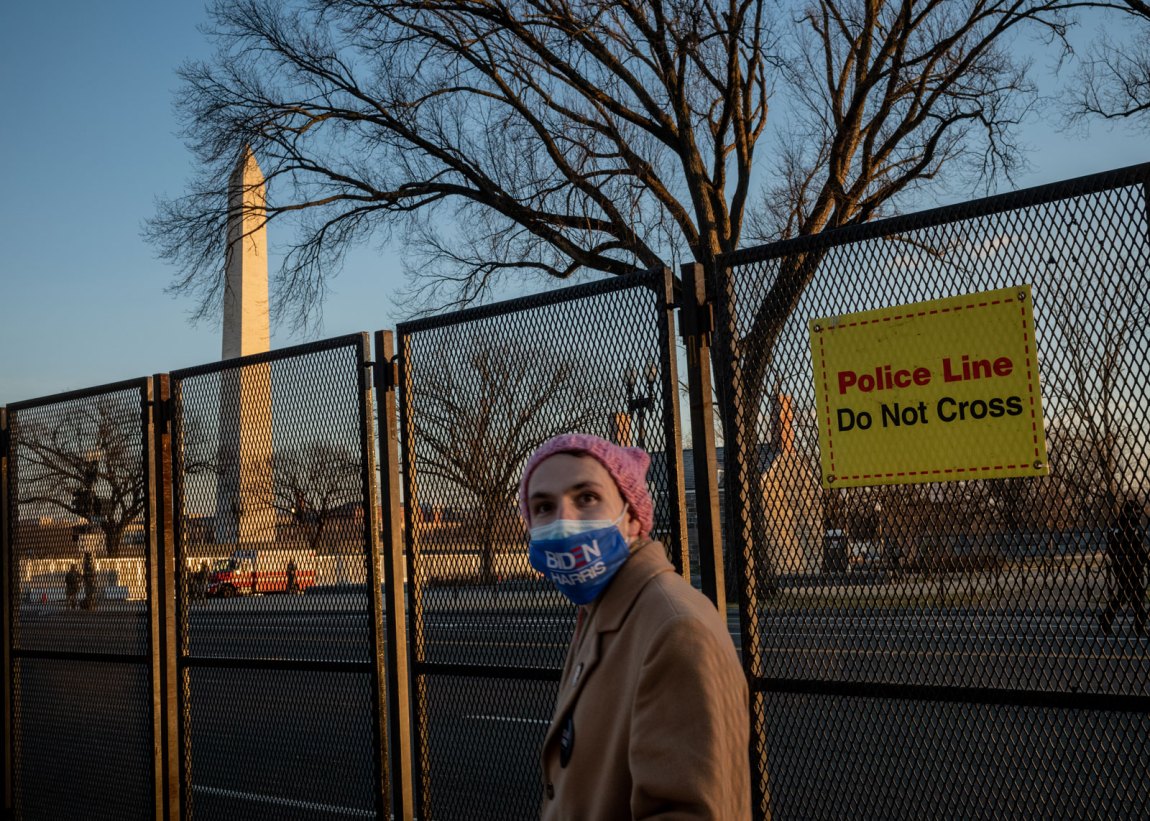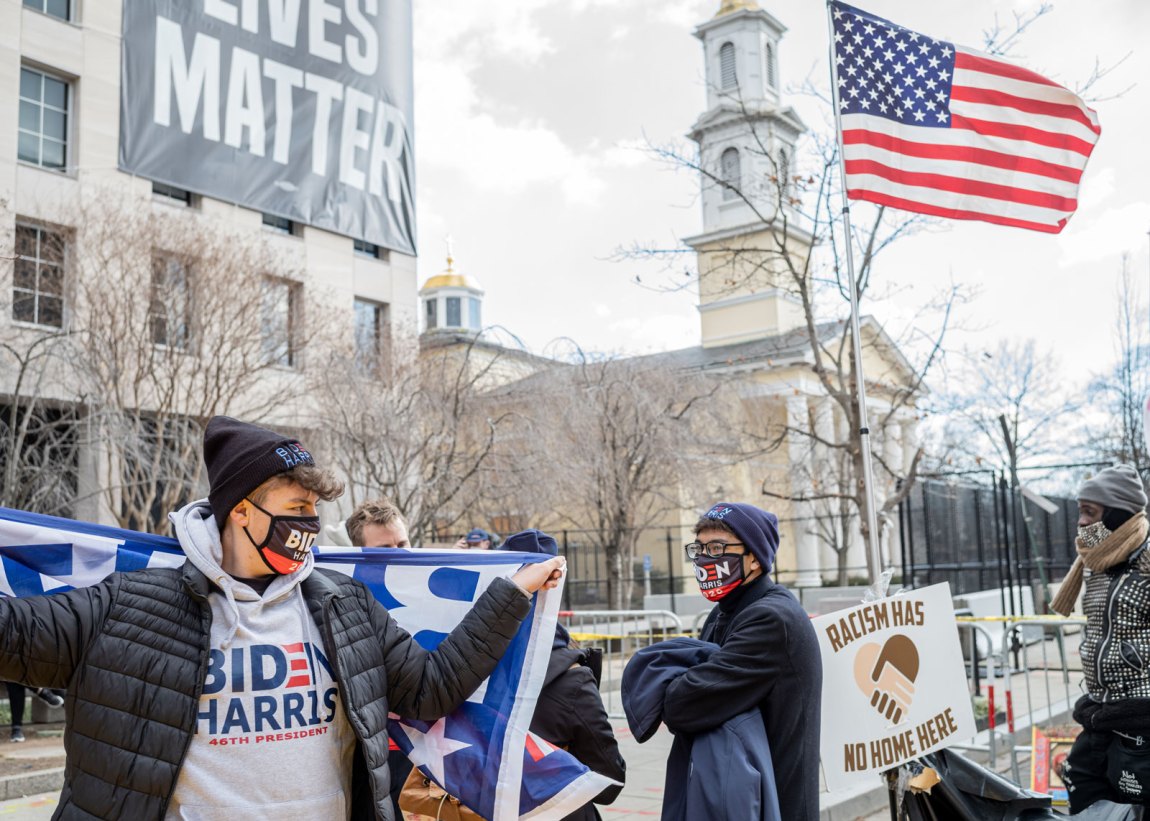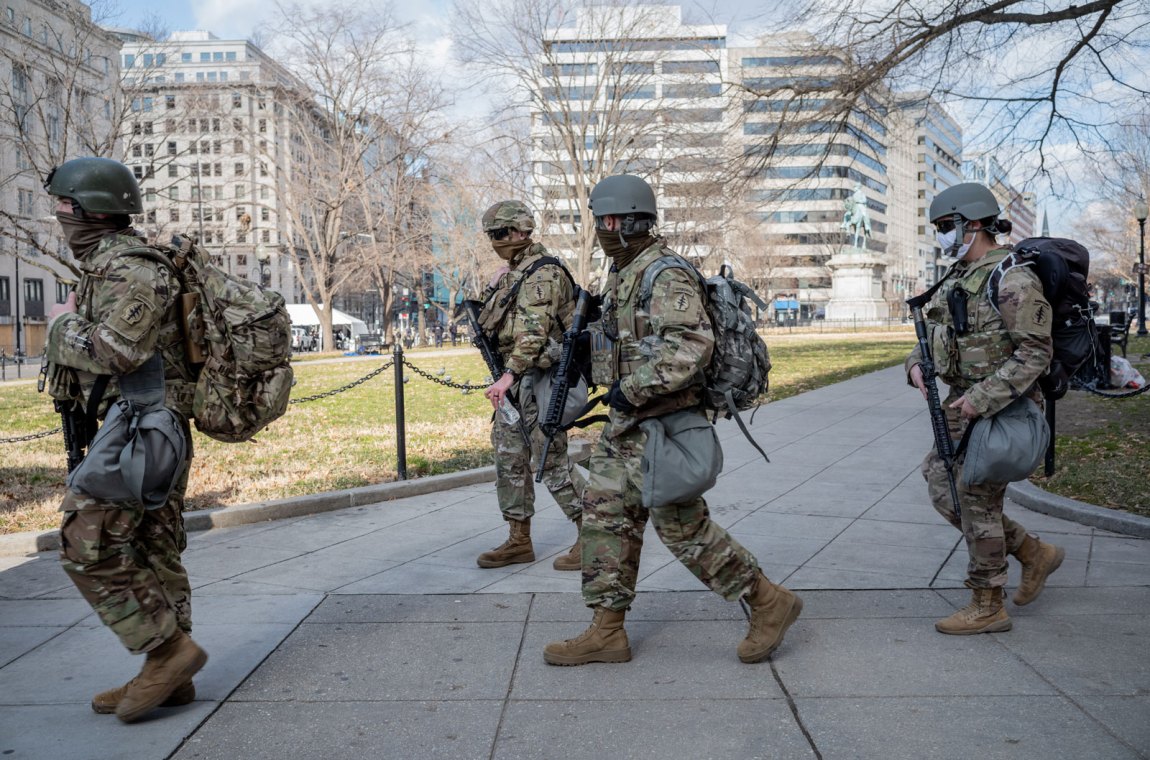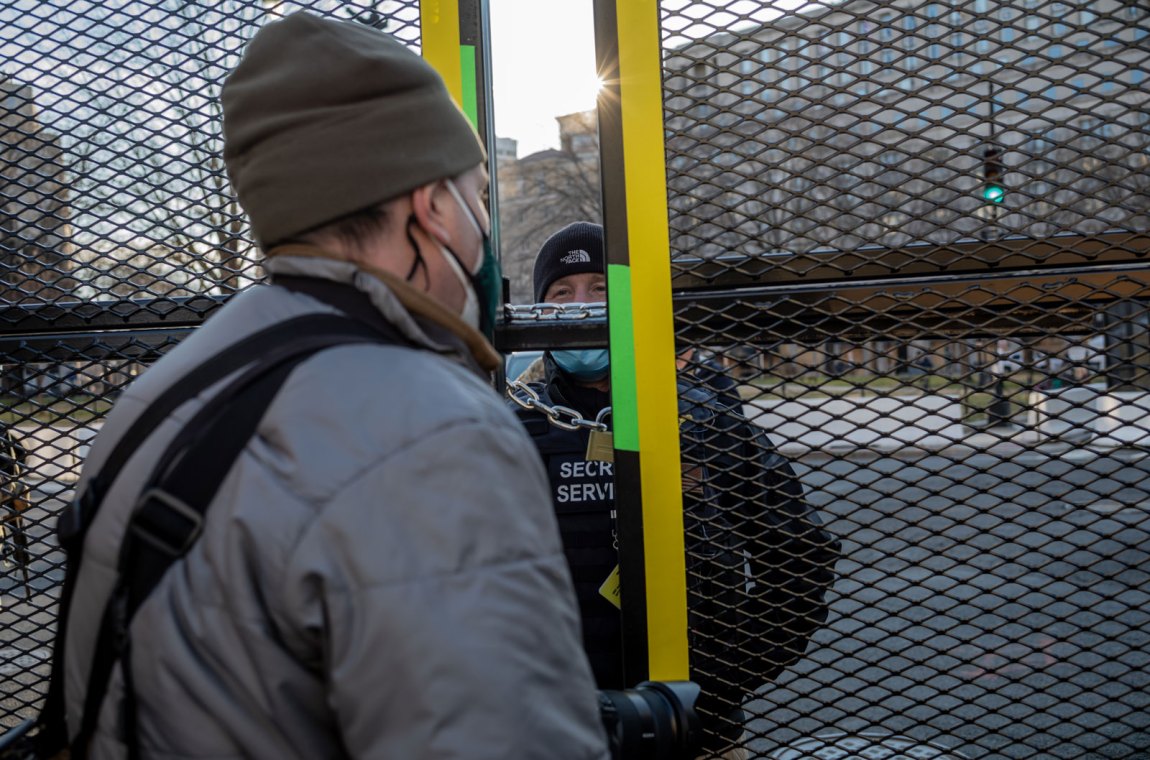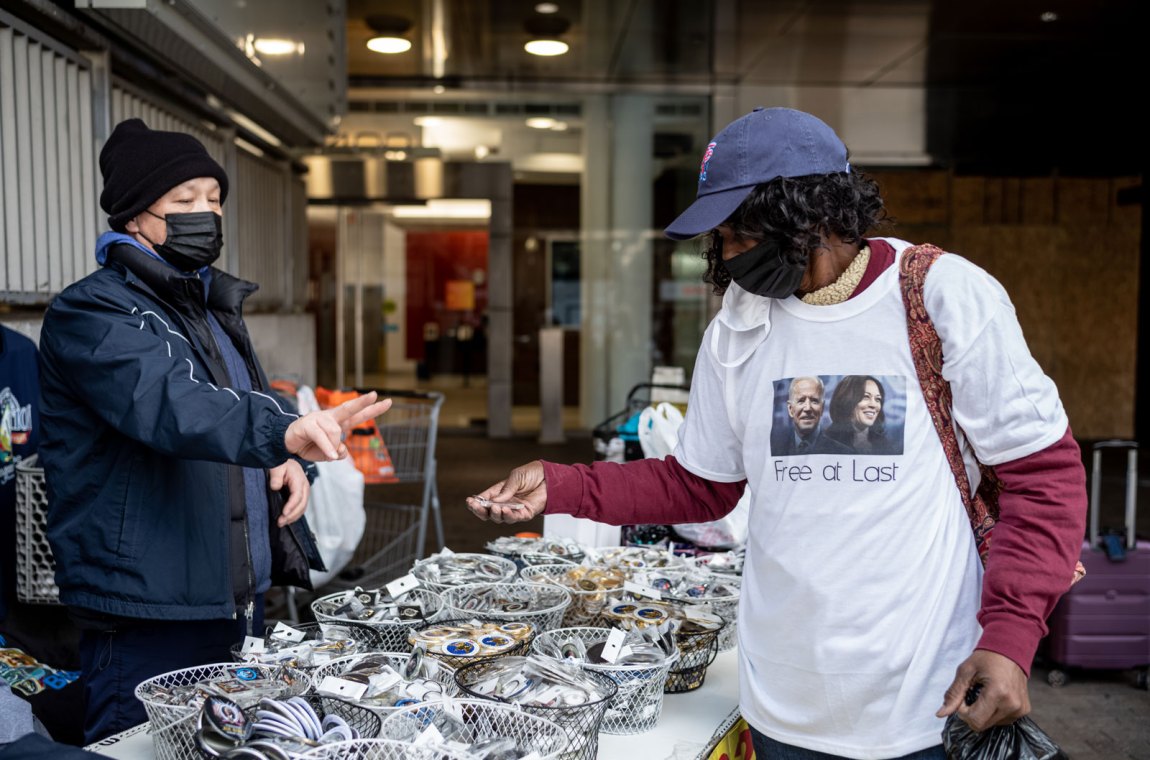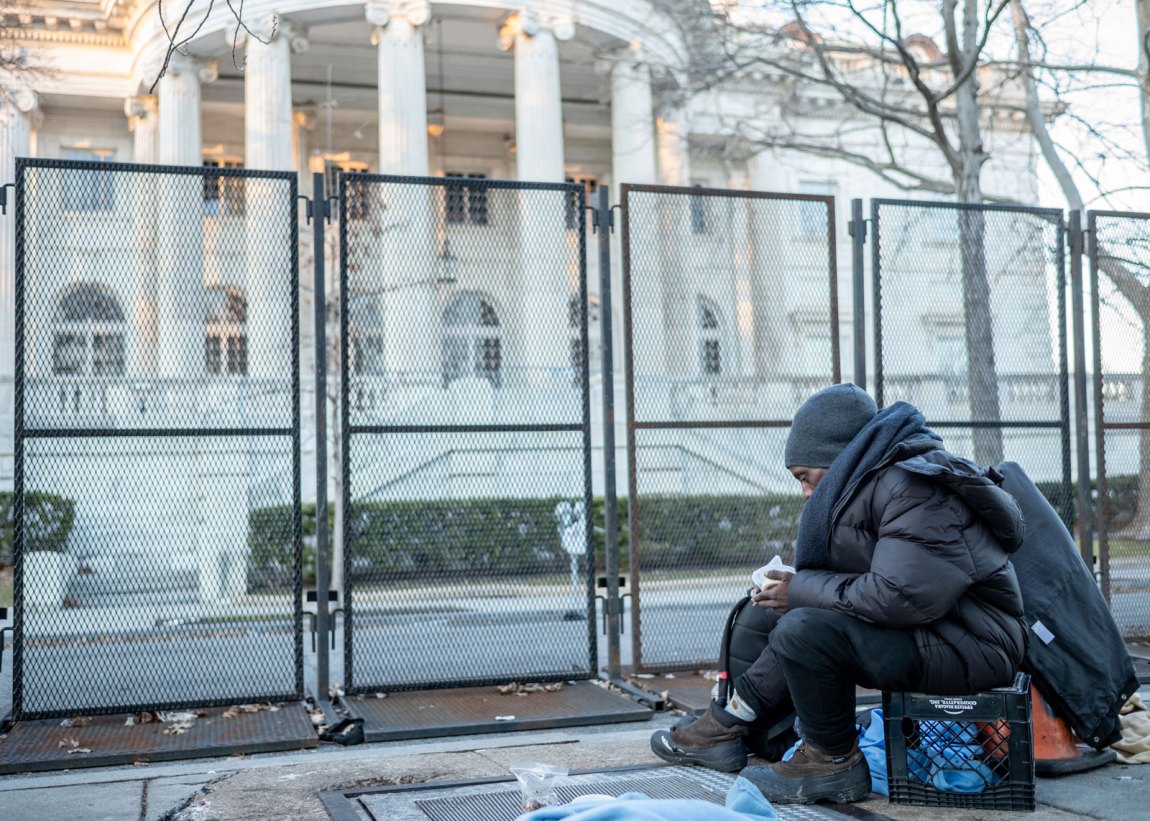Against the silver light of an impenetrably clouded sky was a small orange glow. The waning flame throbbed like a pulse as it descended, before finally disappearing behind the blue and white patch of stars on an American flag.
The insurrection on January 6 was not a singular event. It was the end of a prelude that began on November 4, 2020. The night after the presidential election, with a number of states yet to report, photographer Ruddy Roye and I were outside Miami’s Versailles Restaurant on Little Havana’s famed Calle Ocho. A small but booming crowd had gathered to demand a fair ballot count, oscillating between jubilation—believing in the victory of their party—and rage, fearing the final tally would be corrupt. The following night at La Carreta restaurant— locally known as “the one on Bird”—a larger, more agitated crowd had a pain in their eyes not unlike that on the faces of Democratic voters in 2016—it was a fear that the fundamental values they believe America to stand for were under threat.
As the night progressed their fever became more frenzied. Police pushed the crowd back to prevent them from lunging at passing cars that carried Biden signs and thrusting flag poles toward the windows. The crowd attacked a Telemundo cameraman almost immediately after his arrival, and then turned on us, swarming and jostling us until police said they could not guarantee our safety and escorted us away.
This was when Ruddy and I decided we would observe the postures of those who lost the election, reading their body language to see what it might tell us about how America would transition on Inauguration Day, and into the future.
The weekend of November 14, in Washington, D.C., Trump’s supporters formed caravans flying flags for “God, Guns, and Trump” in a procession to Freedom Plaza. The Million MAGA March was an extravagant performance of support and adoration amid his refusal to concede the White House. The crowd was flamboyant then, brightly colored and celebratory: men and women dressed in glittering stars and stripes, wearing flags as capes like superheroes and smiling wide for cameras. They flew flags that depicted Trump as the Hulk, Rambo, or a character from Fight Club. Everywhere there was brand promotion, with everyone streaming their own personal live feeds. Groups like the Proud Boys, in their signature yellow and black Fred Perry shirts and body armor adorned with their insignia, broke character only to run after drag queen Lady MAGA for a selfie—revealing that, in the pageantry of patriotism, everything becomes permissible.
As the crowd dispersed, and the sun began to set, a woman walking down Constitution Avenue and talking about “The Left” said to her friends: “It’s the fact that they feel like they’re safe, that they’re able to do these violent things. Because the government won’t do anything.” While listening, I looked over and saw Proud Boys standing around chatting with the police on the perimeter— later applauding them as they left. That night, the streets of downtown D.C. erupted into brawls between the Proud Boys and Antifa.
By January, the jubilance had become the resistance.
On the day of the siege, Nicholas Fuentes, “American First” podcaster and leader of the far-right Groyper’s Army played preacher atop the Peace Monument on the Capitol lawn. “Every conservative in this country knows that the legitimacy of this democratic system is over,” Fuentes bellowed. “It means nothing anymore. The situation looks a lot like 1776, frankly.” The crowd broke into cheers and a roaring chant of “U.S.A! U.S.A!” as they thrust their fists into the air. Later, they called for the destruction of the GOP. “We know that the Democrats are our enemies,” Fuentes said. “What we don’t expect is that Republicans will betray us at every turn.”
The main enemy that day wasn’t Antifa, Black Lives Matter, or Democrats—like Rep. Alexandria Ocasio-Cortez, who said she feared her colleagues would betray her to the rioters. It was the Republicans who weren’t falling in line, and anyone who stood between the crowd and the party. The same group that stood chatting with and applauding the police in D.C. just months earlier were storming the Capitol, shouting into the crowd, “Don’t let those police stop you…It’s time for chaos—keep moving forward. They can’t stop us all!”
During debate on the article of impeachment following the riot, which the House passed on January 13, Rep. Hakeem Jeffries, Democrat of New York, declared that “violence will not win, insurrection will not win, sedition will not win, terror will not win.” But the last two months have made clear that violence, and terror, and insurrection can be waged in the name of righteousness, so easily inflamed and so furiously impassioned. As Rep. Kevin McCarthy, Republican of California, said (quoting Pat Buchanan), the necessary response is “force rooted in justice and backed by moral courage.” But that is precisely what the crowd believes it has—a cause with God on their side—and many say they are ready to die for it.
Advertisement
On January 20, 2021, Joe Biden was sworn in as the next president of the United States. His amplified voice carried across an empty mall, with downtown D.C. under a militarized lockdown. The spectators within the security zones were mostly military and media. “The battle is perennial and victory is never assured,” the president said, following his oath. “We can join forces, stop the shouting and lower the temperature,” he went on, explaining that “disagreement must not lead to disunion.” Without understanding that, he said, we could have “no nation, only a state of chaos.”
But the quiet that befell the capital this week is its own sign of a continued underlying chaos—one that revolves around a disunity over morals and values that will be much harder to bridge in this “uncivil war,” as Biden called it. And while many watched the day’s events, marking them as ends, and new dawns, and pages that can be turned on the last four years, the quiet wrath of those who lost continues to seethe.


